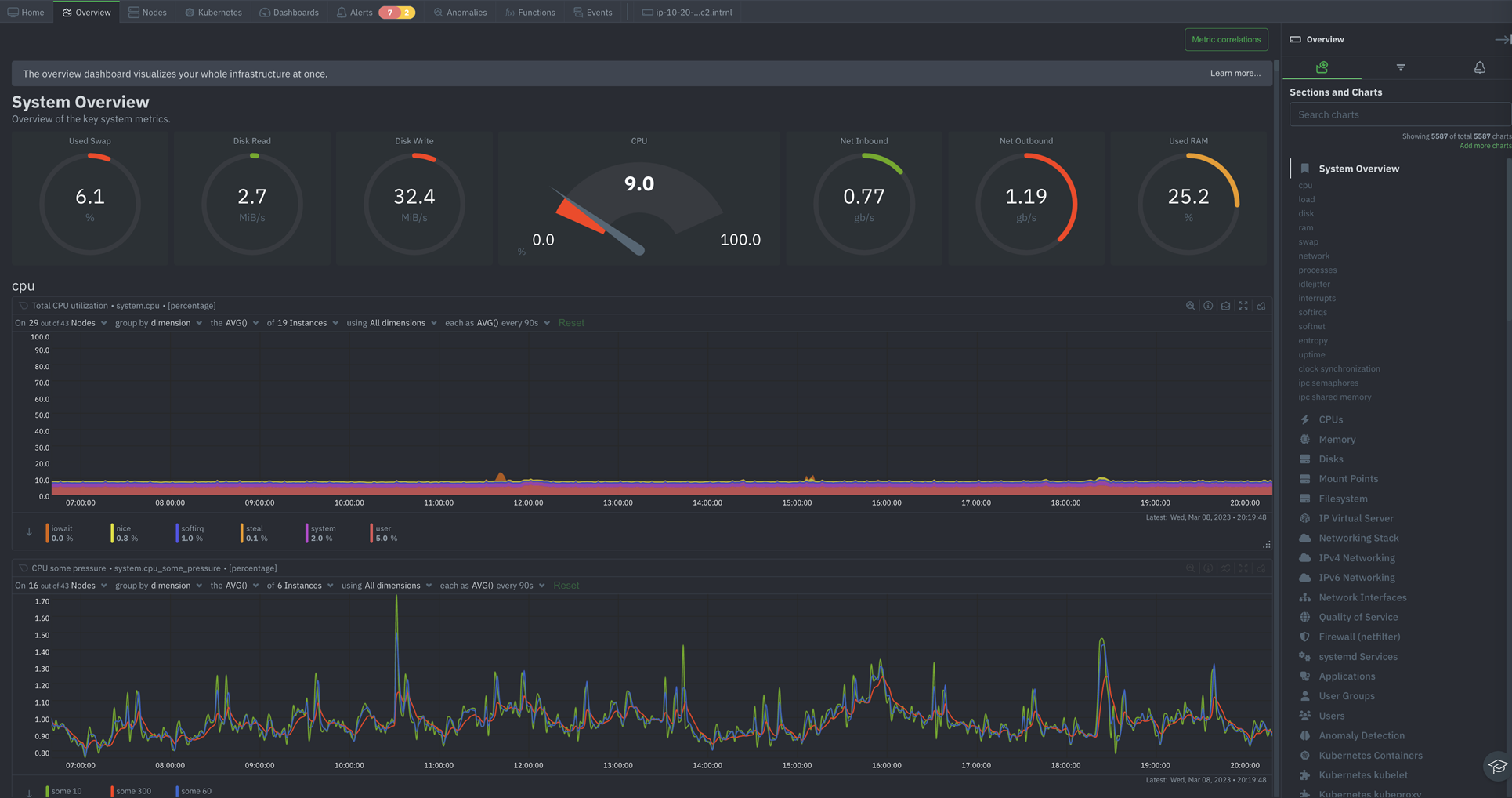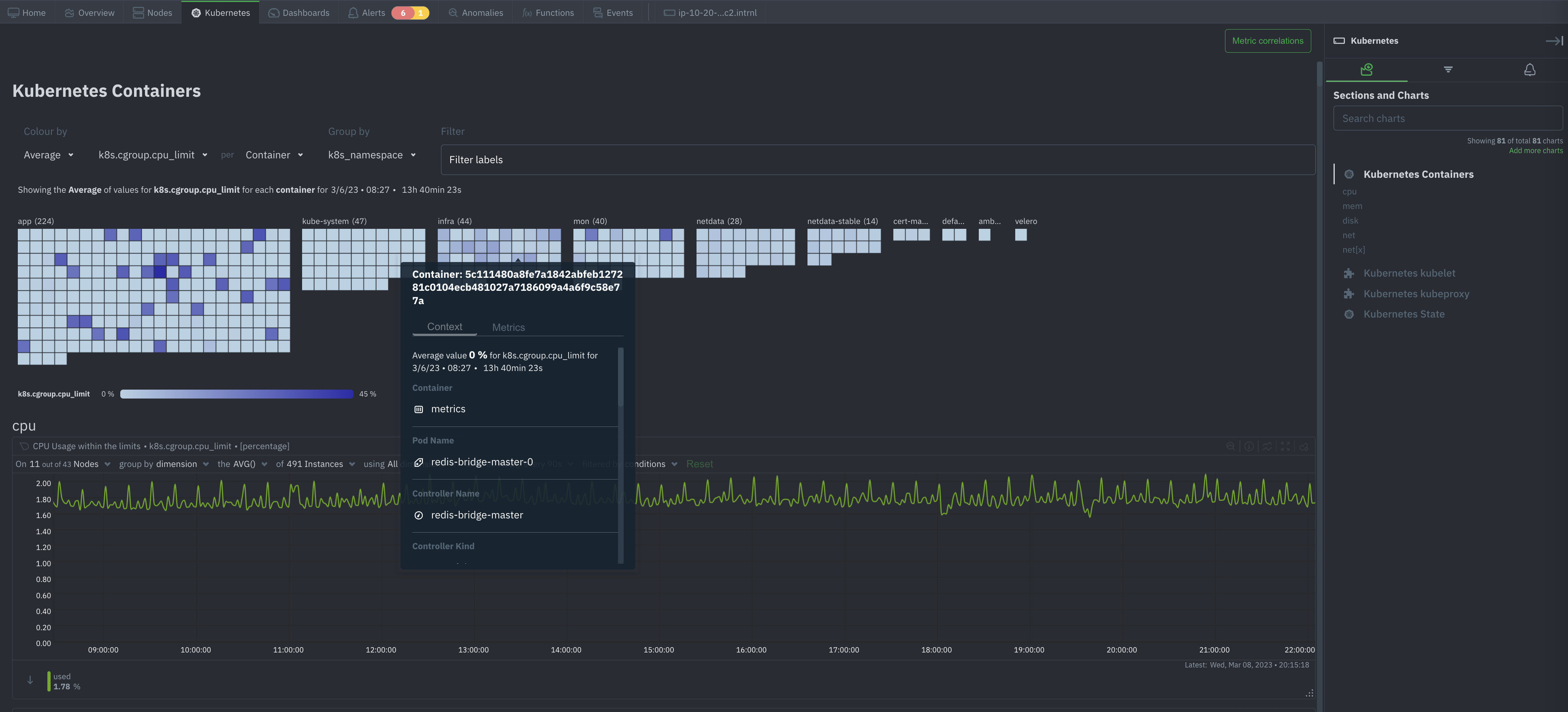What Is Azure?
Microsoft Azure is a cloud computing platform that provides a wide range of services, including storage, networking, analytics, compute, database, mobile, and web. It enables developers to build, deploy, and manage applications and services through Microsoft-managed data centers. Azure provides an integrated suite of cloud services, including analytics, computing, database, mobile, networking, storage, and web. It is designed to help organizations quickly and efficiently build, deploy, and manage applications and services.
How To Install Netdata On Microsoft Azure Platform
Netdata is fully compatible with Microsoft Azure Cloud Platform. You can install Netdata on cloud instances to monitor the apps/services running there, or use multiple instances in a parent-child streaming configuration.
- Sign up to https://app.netdata.cloud/
- You will be presented with an empty space, and a prompt to “Connect Nodes” with the install command for each platform
- Select the platform you want to install Netdata to, copy and paste the script into your node’s terminal, and run it
You can add one or more VMs or the entire Azure Kubernetes Service (AKS) Cluster on Netdata Cloud and monitor 100s of 1000s of system level and application metrics with zero configuration.
All the Azure VMs (or the AKS Cluster) will show up on the Nodes tab.

Essential Azure Metrics To Monitor & Why They Matter
Like with any cloud solution, it is absolutely essential to monitor the Azure system level metrics to keep a tab on the Cloud resources being utilised in addition to Operational and Performance metrics from the applications running on the Cloud.
Infrastructure Monitoring
Monitor the underlying infrastructure of the cloud environment, such as the hardware, software, and networks that make up the cloud.
Availability Monitoring
Ensure that applications and services are available and accessible to users.
Performance Monitoring
Ensure that applications are running smoothly by tracking resource usage over time such as CPU utilization and memory consumption and help optimize the cloud environment for better performance while reducing costs.
Security Monitoring
Cloud security is crucial and thus monitoring for potential threats is a must. Security monitoring tools can help detect malicious activity such as data breaches, unauthorized access attempts, DDoS attacks, and more.
Capacity Monitoring
Ensure that there is enough capacity to handle the workload without any performance issues and handle changes in workloads.
Usage Monitoring
Usage monitoring helps businesses understand how their cloud resources are being used and by whom to make decisions about usage policies, cost optimization strategies, and more.
Why Use Netdata For Azure Monitoring
The Azure Monitor, is a cloud-based monitoring service from Microsoft Azure that allows users to collect and analyze data from a variety of sources. Azure Monitor provides insights into the performance, availability, and overall health of applications and services running on Azure. It can be used to track performance metrics, detect and diagnose issues, analyze trends, and provide recommendations. But like any other service on the cloud, these are expensive and usually come is pay-as-you-go packages and brings in the need for organizations to look at an alternative monitoring solution.
Netdata is a comprehensive monitoring solution and you can monitor and troubleshoot various aspects of your infrastructure including servers, VMs, Network, Disks, K8s, wide variety of applications (databases, gateways, web servers, etc) with zero configuration, out of the box.
- Automatically gather system level metrics from operating system, containers, network, storage, processes, including the system calls these processes (with eBPF) do and it will automatically organize and correlate all the information in ready to use dashboards. Azure system level metrics from the VMs show up in the System Overview section on the Overview tab.

- Automatically gather operational and other performance metrics from almost every packaged application available including popular web servers such as Apache, Nginx, and HAProxy, databases like Redis, MongoDB, PostgreSQL, and MySQL/MariaDB etc and these metrics show up on the corresponding application sections on the Overview tab.
- Automatically gather metrics from your Kubernetes GKE Cluster and visualise all the Kubernetes Containers, States, Kubelet and Kubeproxy related metrics on the Kubernetes tab.

Troubleshooting Azure Performance Issues With Netdata
Netdata offers powerful tools to optimize your troubleshooting and solve your response time issues faster than ever. Finding the proverbial needle in the haystack is a lot easier with Netdata.
Alerts
The simplest way of troubleshooting your infrastructute. Netdata comes with 100s of pre-defined Alerts out of the box and allows you to create Custom Alerts based on your requirements and these can be notified through multiple notification mechanisms.
Metrics Correlations
A tool that scans all metrics to find how they correlate in a given time-frame. This allows you to highlight an area with a spike or a dive on a chart and let Netdata find which other metrics have changed similarly at the same time.
Anomaly Advisor
A tool that scans all metrics for anomalies during a given time-frame. This allows you to highlight an area with a spike or a dive on a chart and let Netdata find which anomalies were detected during that time-frame, across your infrastructure.
These tools can be of great help identifying and revealing anomalies in your infrastructure and to understand interdependencies among infrastructure components. For example, you can see how CPU utilization affects response time, how disk throughput affects database queries, how network bandwidth affects web requests etc.
You can also see how different applications interact with each other on the same server or across different servers. By correlating application metrics and server metrics you can identify root causes, troubleshoot problems, optimize performance, improve availability, enhance security etc on your infrastructure.